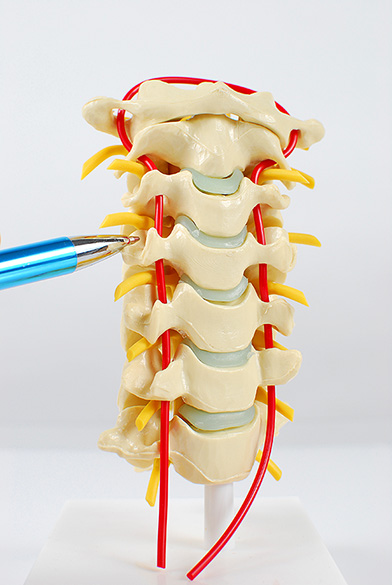Medial Branch Blocks
Medial Branch Blocks target the nerves that originate from the facet joints in the spinal region that send pain signals. The Medial Branch Block can determine if the pain comes from the Facet Joint and from this, further treatments can be advised.
In some cases, when a Facet Joint Injection has failed to work, a Medial Branch Block is used instead. This is because some bodies cannot tolerate steroids and the body might reject

How does a Medial Branch Block work?
- The patient usually lies on their stomach
- Blood pressure and oxygen levels will be monitored during the procedure.
- A general anesthetic is injected near the medial nerves. This is so that the skin becomes numb and easy to work with.
- The back is shaven and cleaned with an antiseptic to prevent infection.
- Fluoroscopy may be used to pinpoint the region where the injection needs to be used. In most procedures, there are multiple injections to determine the source of the pain.
- The needle of the Medial Branch Block is inserted.
- The procedure usually takes no longer than 1 hour including the operation and post-assessments.
In some cases, patients experience instant pain relief and this shows that the root of the problem was the Facet Joint. This may only last a couple of hours (when the general anesthetic wears off).
The Medial Branch Block may take a few hours to take into effect. However, even the Branch Block may only last a couple of days the first time – this is because a trial needs to be undertaken in order to see how the body reacts. After this, the injections are given in blocks of a maximum of 3 within 6 months.
The more often the injection is given, the longer the drug will last in the body.
This treatment is meant to be diagnostic though so if problems still persist then a doctor will refer you to a specialist to undergo radiofrequency ablation – this provides longer-lasting relief.
Who should avoid Medial Branch Blocks?
You must check to see if you are allergic to any medication that will be inserted as part of the procedure.
If you are a person who is on blood-thinning medication then do NOT take part in this – this is because an infection can form and the symptoms of pain may not weaken but grow instead.

Side Effects
There have been reports of people experiencing an allergic reaction – however, this is rare. The main cause of the allergic reaction is not from the anesthetic but from the solution produced by the X-Ray.
Others have reported experiencing bleeding however this can only occur if a patient has had an unknown internal bleeding problem. Researchers have argued that internal bleeding is as rare as a minor infection, which happens in less than 1% of the population.
